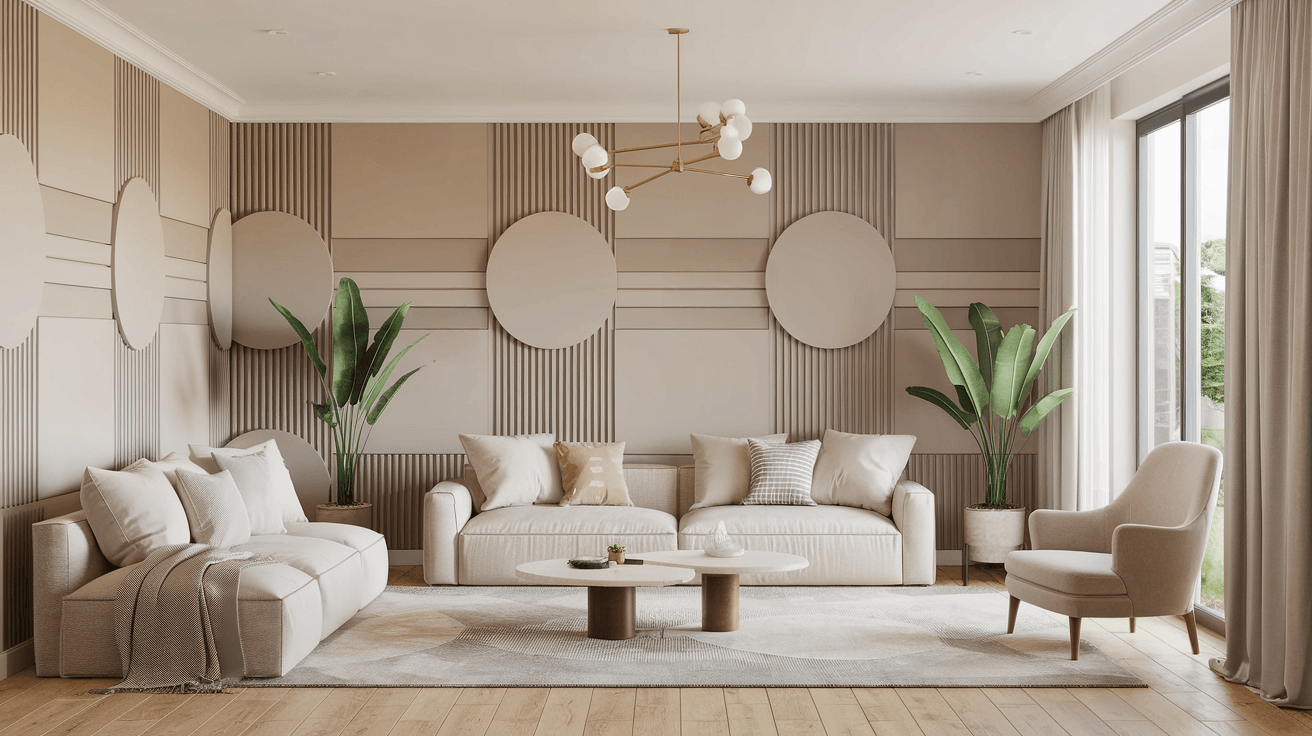Ever wondered what is soundproofing and how it can hush the chaos of barking dogs, roaring traffic, or that neighbor who loves late-night karaoke? This guide breaks it all down—definition, mechanics, benefits, and more—so you can decide if it’s the answer to your noisy woes.
Noise is everywhere—think kids stomping upstairs, construction rattling your windows, or a TV blaring through thin walls. What is sound proofing if not your chance to reclaim peace in a world that won’t shut up?
We’re launching a soundproofing series with this piece, starting right here with the basics. Check out soundproofing basics for the full scoop on where we’re headed.
Soundproofing isn’t just for recording studios or luxury homes—it’s for anyone tired of unwanted sound creeping into their life. Let’s dig into what does soundproof mean and why it might be your next DIY win or pro-level upgrade.
You don’t need to be an expert to grasp this—or use it. Whether it’s a quick fix like a rug or a full overhaul of a room, soundproofing puts you in charge of your soundscape.
This isn’t about silencing everything forever—it’s practical control. From apartments to home offices, soundproofing adapts to what’s driving you nuts.
WHAT IS SOUNDPROOFING
So, what is soundproofing? It’s the process of blocking or reducing sound from passing through walls, floors, or ceilings, creating quieter spaces.
What Does Soundproofing Mean in Simple Terms?
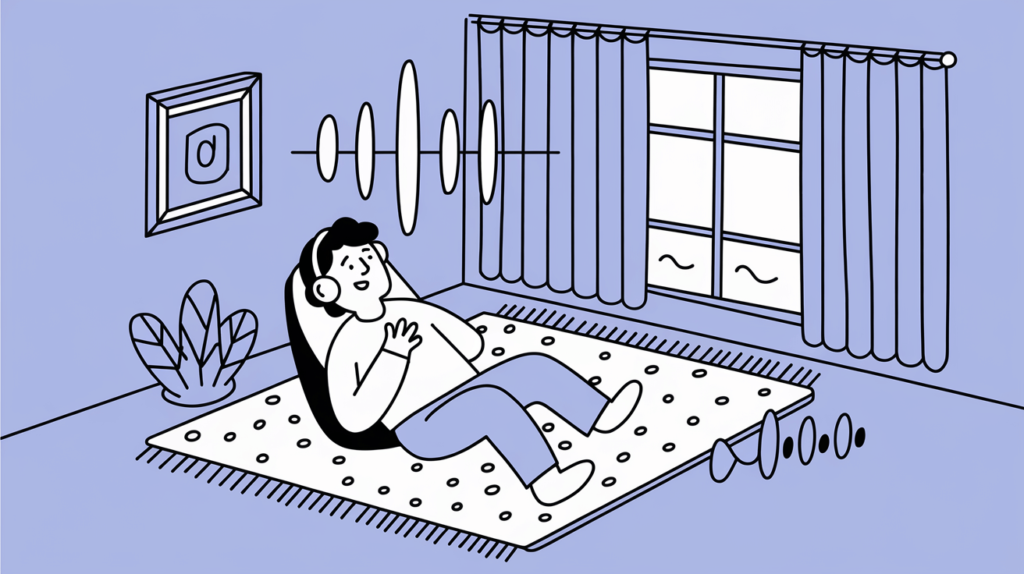
To define soundproofing, picture a barrier that keeps noise where it belongs—outside your space or Locked in a room. It’s about using things like insulation, curtains, or even furniture to stop sound waves cold.
What does soundproof mean day-to-day? It’s turning a noisy apartment into a calm hideaway or keeping your Zoom calls from leaking to the kitchen.
This isn’t rocket science—it’s doable stuff. Soundproofing can be as easy as tossing a rug down or as involved as doubling up a wall, depending on your noise problem.
Why should you care about this? Knowing what is sound proof means you can tweak your home for better sleep, sharper focus, or just some rare quiet time.
Think of it as noise armor for your space—not total silence, but control. It’s about cutting down the racket that’s bugging you most, from traffic to loud neighbors.
No two rooms need the same fix, though. A basement might be fine with less, while a street-facing bedroom begs for more—soundproofing flexes to your setup.
Start small or go big—it’s your call. Even a little effort can shift how you live with sound every day—explore the benefits of soundproofing for more.
Become an Acoustics Insider!
Gain access to expert insights on acoustic panels, soundproofing, soundbars, DJ controllers, MIDI setups, turntables, and more—plus exclusive tips and gear recommendations to perfect your audio world.
We value your privacy—unsubscribe anytime, no spam ever, using the link in our newsletter.
How Does Soundproofing Work?
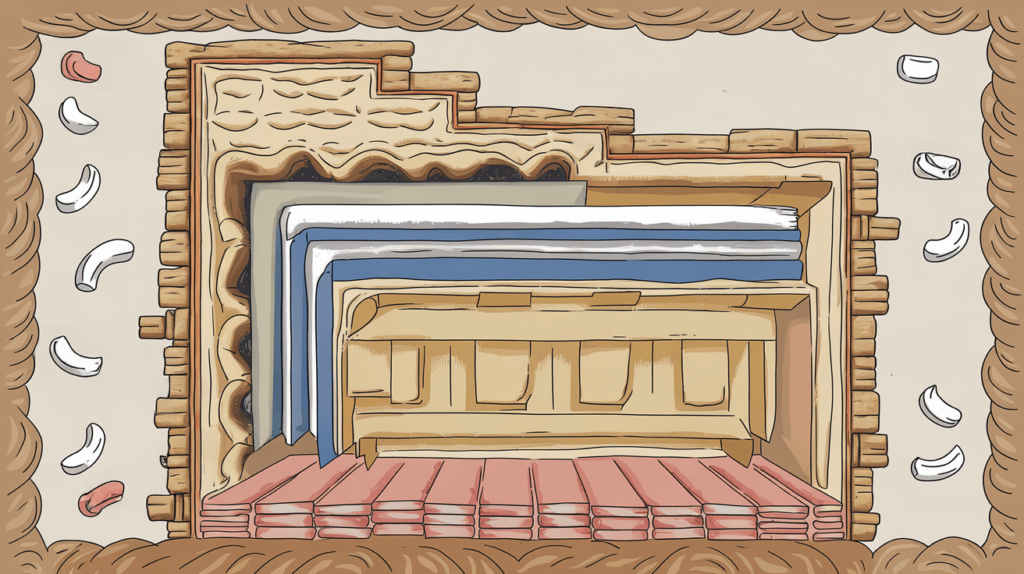
So, how does soundproofing work? It blocks sound with dense materials—like drywall or mass-loaded vinyl—or absorbs it with soft ones, like acoustic foam, carpets, or thick drapes.
Sound moves as vibrations through air, walls, floors—anything it can shake. How soundproofing works is by throwing up roadblocks—breaking that vibration chain before it reaches you.
Take a thin wall: voices cut right through like it’s nothing. Slap on an extra gypsum board layer, and those next-door chats fade to a whisper—simple but effective.
Floors tell a different tale—how does sound proofing work there? A plush carpet or rubber underlay can hush footsteps from kids or pets scampering upstairs.
Windows are sound’s sneaky back door—tough to tame. Double-pane glass or heavy curtains can slash that noise, proving soundproofing adapts to any weak spot.
Ceilings play a role too—don’t skip them. Drop panels or insulation up top can stop a rowdy upstairs neighbor from crashing your quiet movie night.
Doors leak sound too, especially if they’re hollow. Swap one for a solid core or add weatherstripping—small moves, big quiet gains—see the difference between soundproofing and sound absorption for more.
This is basic physics, not some mystical trick. Pick the right combo of materials, and you’ll feel the difference—check out types of noise to dig deeper.
What Does Soundproofing Do for Your Space?
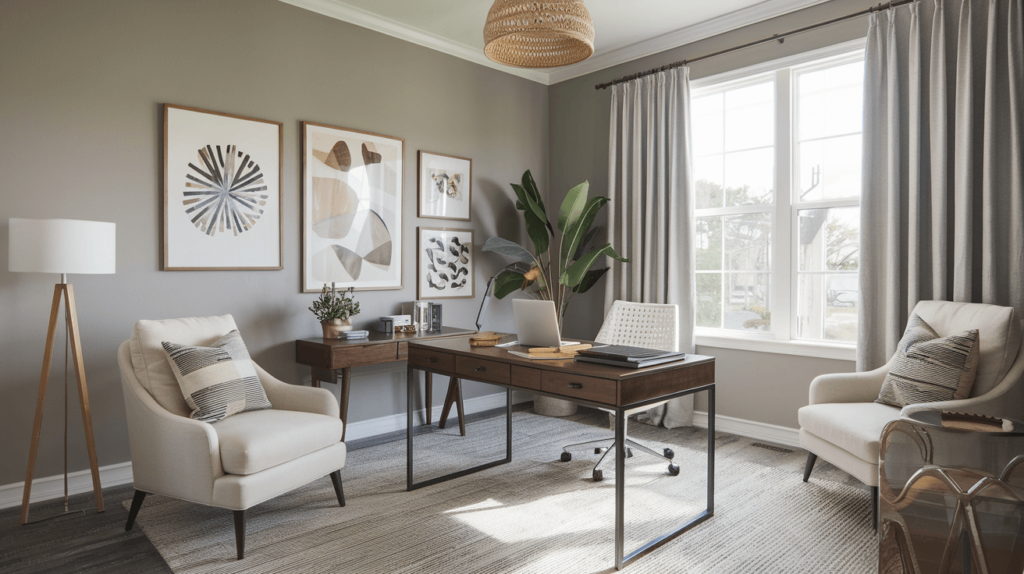
Curious what does soundproofing do? It slashes outside noise—like a busy highway—or dampens sounds between rooms, turning chaos into a calm you can live with.
Picture this: no more car horns jolting you awake at 5 a.m. That’s what is sound proofing at work—peace stepping in where pandemonium once ruled.
It’s not just about keeping noise out, either. Soundproofing traps your guitar riffs or loud movie nights inside, sparing your neighbors—and their glares.
In a home office, it’s a focus game-changer. Muffled chatter or a muted lawnmower means what does sound proof mean? Less distraction, more getting stuff done.
Small tweaks can shock you with results. A sealed door gap or thick blinds might drop noise enough to reclaim your living room’s calm vibe.
Even shared walls get a boost—apartments love this. Soundproof one side, and a shouting match next door turns into faint, ignorable hum—life upgraded.
Basements can benefit too—less echo, more usable space. Turn a noisy cave into a chill spot with just a few soundproofing moves.
How is Soundproofing Effectiveness Measured?

How do you know how does soundproofing work for real? Ratings like STC (Sound Transmission Class) and IIC (Impact Insulation Class) measure how well materials stop noise cold.
STC tackles airborne sounds—voices, radios, barking dogs—while IIC handles impacts, like footsteps or a kid dropping toys. Higher scores (say, STC 50 beats 30) mean better quiet.
These aren’t just random digits—they’re lab-tested. Define soundproof power by decibels blocked—like 40 dB turning a yell into a whisper you can sleep through.
A basic drywall might hit STC 35—not terrible, but voices sneak through. Add fiberglass insulation, and you’re near 50—solid for most homes or apartments.
Floors get IIC ratings—bare wood might score 45, loudish. Toss on carpet padding, and it jumps to 60, muting those thumps from upstairs.
Windows matter too—single panes often flop at STC 25. Upgrade to double glazing, and you’re at 35—noticeable quiet for street-facing rooms—learn more at measuring soundproofing effectiveness.
It’s your cheat sheet to picking materials. Check these ratings on products for the full breakdown.
Is Soundproofing Effective?
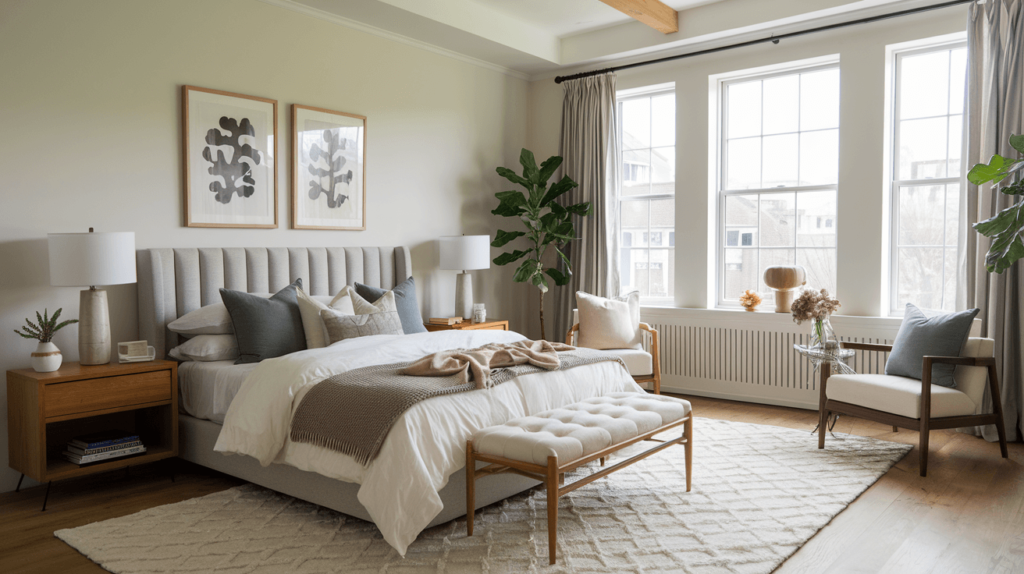
Wondering what does soundproofing do in action? Studies say it cuts noise by 20–50 decibels—shouts turn to whispers, traffic fades to a distant hum.
It’s not bulletproof—thin walls won’t stop a jackhammer next door. But with good materials, effectiveness of soundproofing transforms apartments, offices, or kid-packed homes—see effectiveness of soundproofing.
Picture a street at 70 dB—loud enough to annoy. A soundproofed window drops it to 30 dB inside—quiet enough for a nap or a clear call.
Materials decide the win—foam dampens echoes, not much else. Dense panels or insulation block better—results depend on what you pick and where.
Real example: a studio with treated walls and ceiling. Record without cars or sirens bleeding in—proof it’s science, not just talk.
Even partial fixes help—say, a loud 60 dB neighbor. A soundproofed wall cuts it to 40 dB—still there, but way less in your face.
Stay tuned for more real-world proof. Our series will dig into wins with soundproofing—keep an eye out.
Can You Test Soundproofing Yourself?

Curious how to test soundproofing at home? Clap loud, blast some music, or grab a decibel meter to see if sound stays put—or sneaks out.
It’s simple but tells you plenty. Less echo or outside noise means what is sound proof is working—no pro tools needed to check it.
Try this: stand outside a treated room. Barely hear a shout from inside? That’s your soundproofing holding the line like a champ.
Phone apps make it easy—free decibel meters are everywhere. Measure before and after a fix, like a curtain—10 dB down is a solid win.
Kids can pitch in—make it a game. Have them yell while you listen next door; less sound means your setup’s doing its job—see how to test soundproofing.
Even basic tests show gaps—like a leaky window. Blast a radio, step outside—if it’s loud, you’ve got work to do.
This is DIY proof you can trust. A full testing rundown’s in our series—stay tuned.
Should You Choose DIY or Professional Soundproofing?
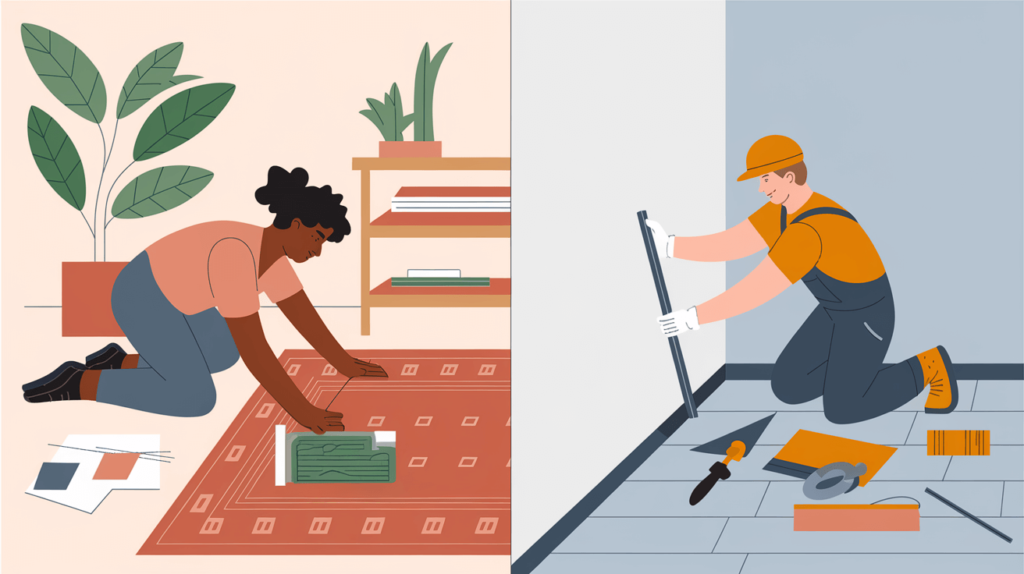
So, DIY soundproofing vs professional soundproofing—what’s the deal? DIY saves cash with fixes like rugs or caulk, while pros nail big jobs with skill.
Cost is a decider—curtains might run $20, easy on the wallet. A pro redoing a wall? Think $500 or more, but it’s built to last.
DIY shines for beginners—weatherstripping a door is $5 and fast. Sound slips through gaps, so sealing them cuts noise you didn’t even clock.
Pros take on the heavy lifting, though. Decoupling a wall or fitting a soundproof door needs know-how—how soundproofing works best with experience—check choosing between DIY and professional soundproofing.
Think about your noise—light hum from a fan? DIY’s fine. Loud neighbors through paper-thin walls? Pros might be the smarter call.
Small wins stack up—like a $10 rug on a creaky floor. It dulls steps enough to notice, no contractor required.
Weigh your setup and budget—start where you stand. More on picking the right path is in our series.
Conclusion
Now you’ve got what is soundproof and how does soundproofing work locked in tight. It’s a real fix—block noise, boost calm, live how you want to.
This kicks off our soundproofing journey—there’s more on the way. Guides on testing, results, and tricks are next—see ultimate guide to soundproofing for the big picture.
Noise doesn’t run the show anymore. Soundproofing hands you options—start small, go big, or mix it up—it’s your move.
Take it one step at a time—or leap in. A quieter life isn’t a pipe dream; it’s doable, and we’re here to guide you.
